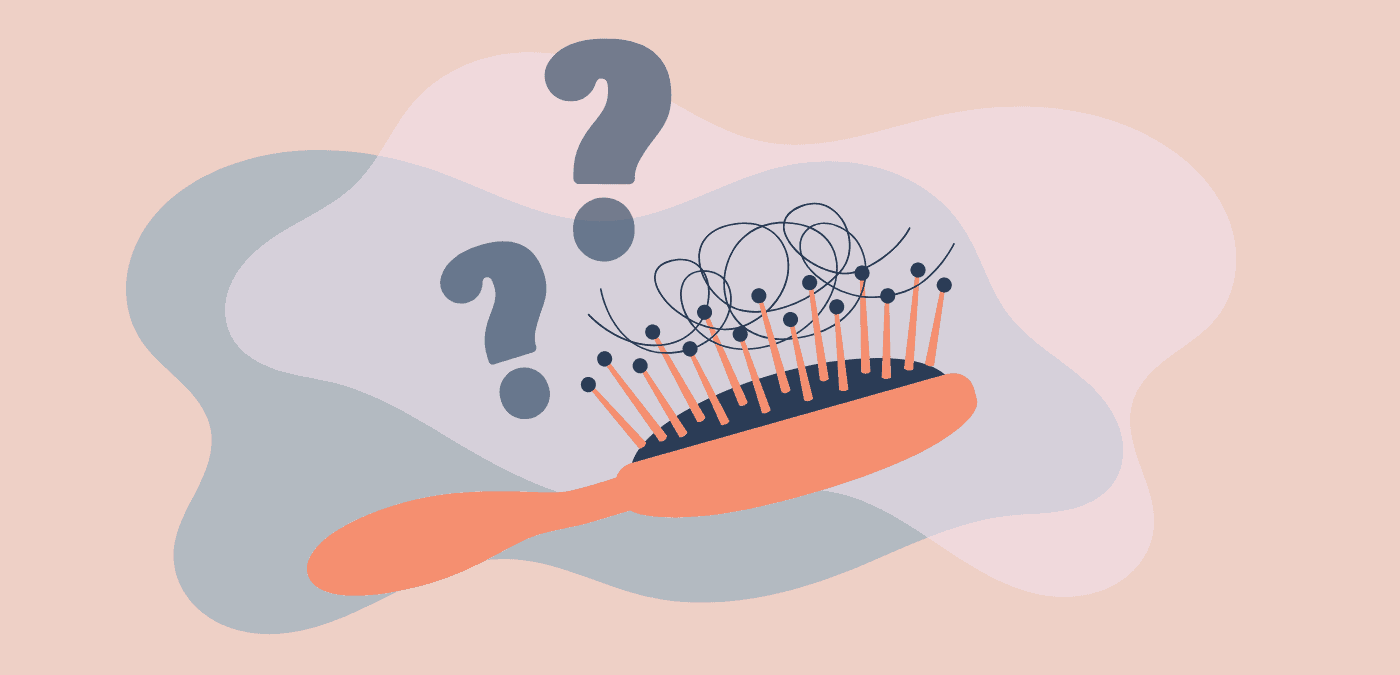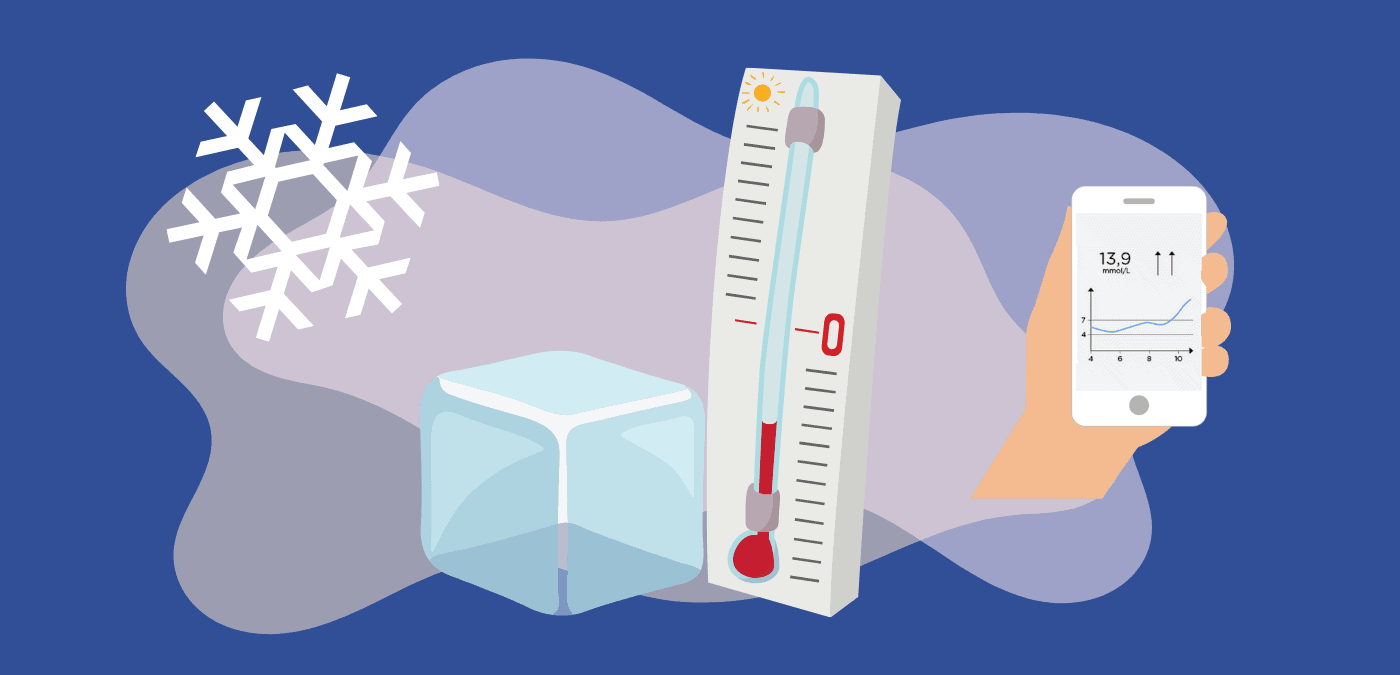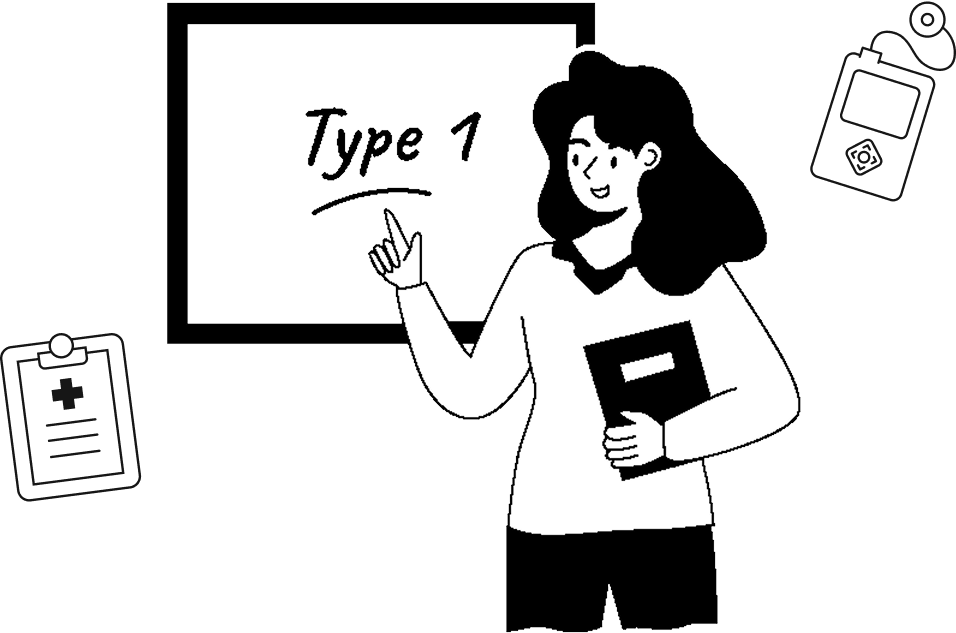Each of us can lose up to 100 hairs per day from the 100,000 or more that grow on our heads, and that’s normal. It’s part of the hair cycle, in which hair grows and naturally falls out. So finding a handful of hairs at the bottom of the shower shouldn’t worry you! However, if this amount increases over time and your hair seems to be becoming thinner or sparser, you may start to be concerned.
Stress, fatigue, overwork, new medication(s), or hormonal fluctuations can temporarily cause greater hair loss, but sometimes hair loss can be longer lasting.
What about type 1 diabetes (T1D)? Is it connected to hair loss? This is a question we received from one of the participants in the BETTER registry.
According to available literature, it seems that T1D may interfere with the hair growth cycle in some individuals for various reasons.
Persistently high blood sugar levels can damage vessels
Having high blood sugar levels over a long period can damage some of your organs, including your blood vessels. If this continues, the blood vessels will harden, leading to poor blood circulation in the body. The affected cells will receive less oxygen and fewer nutrients carried by the blood. This deficiency can affect the hair follicles that produce hair all over your body, including the hair on your scalp. In this case, you may notice a slowdown in hair growth or increased hair loss.
T1D increases the risk of alopecia
People living with T1D are also at higher risk of developing other autoimmune diseases, including alopecia areata (also known as spot baldness). This condition attacks the hair follicles, causing scalp and body hair loss, often in patches. If you notice abnormal hair loss, talk to your medical team.
T1D, stress, and the thyroid gland
Shortly before and when you were diagnosed with T1D, you may have noticed more hair in your shower or bath. This is often a temporary situation, caused by the stress associated with your new reality and elevated blood sugar levels that have not yet been lowered by T1D treatments. You may also experience more hair loss during particularly stressful periods related to living with T1D.
Additionally, the life cycle of your hair can also be a symptom of an imbalance in hormone production by your thyroid gland—both high hormone production (hyperthyroidism) and low hormone production (hypothyroidism) can affect people living with T1D. A blood test ordered by your care team can confirm thyroid disease and some believe those with T1D should be screened annually for thyroid disease.
Reversible or not?
Hair loss due to T1D is usually reversible. The first step is determining the cause. Consult your care team to check if it is related to a thyroid problem or alopecia. In most cases, there are treatments available to slow down hair loss and/or stimulate regrowth.
Once these particular health issues are ruled out, you can control or reduce hair loss in several ways, including:
- Exercising regularly to manage your blood sugar and keep it within target most of the time (between 3.9 and 10 mmol/L).
- Reducing general stress by practicing meditation, relaxation techniques like yoga, and physical activity.
- Reducing stress related to T1D by seeking support from your loved ones or support groups, or by consulting mental health professionals.
- Having your medication reviewed by your pharmacist or doctor.
- Eating a variety of foods that provide proteins, iron, zinc, magnesium, and vitamin B, and limit your consumption of processed foods as much as possible.
- Using shampoos or topical treatments (e.g., Rogaine) that are often prescribed by a dermatologist.
References:
- Watson, S. (2022). Does Diabetes Cause Hair Loss? Healthline. Page consultée le 13 janvier 2025. https://www.healthline.com/health/does-diabetes-cause-hair-loss#How-diabetes-affects-the-body
- Jenna Fletcher (2023). Does diabetes cause hair loss? MedicalNews Today. Page viewed on Januray 4, 2025. https://www.medicalnewstoday.com/articles/323810#treatments-for-hair-loss
- Association canadienne de dermatologie. L’alopécie. Page viewed on January 14, 2025. https://dermatologue.ca/patients-et-grand-public/maladies-et-affections/problemes-capillaires/alopecie/
- National Alopecia Areata Foundation. Related conditions. Page viewed on January 14, 2025. https://www.naaf.org/alopecia-areata/related-conditions/
- Jabbari, A. et al. (2013). Genetic Basis of Alopecia Areata: A Roadmap for Translational Research. Dermatol Clin. 31(1):109–117. doi: 10.1016/j.det.2012.08.014
- Guillermo E. et al. (2003). Thyroid Dysfunction in Patients With Type 1 Diabetes: A longitudinal study. Diabetes Care 26 (4): 1181–1185. https://doi.org/10.2337/diacare.26.4.1181
Written by: Nathalie Kinnard, scientific writer and et research assistant
Reviewed by:
- Sarah Haag, R.N., B.Sc.
- Claude Laforest, Michel Dostie, Jacques Pelletier, Amélie Eloundou, Domitille Dervaux, Laurie Lépine, and Barbara Kelly, patient partners of the BETTER project.
Linguistic revision by: Barbara Kelly





